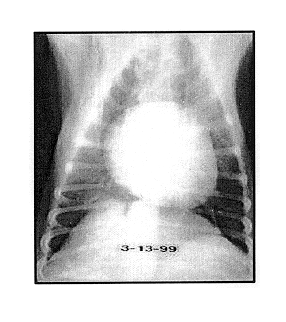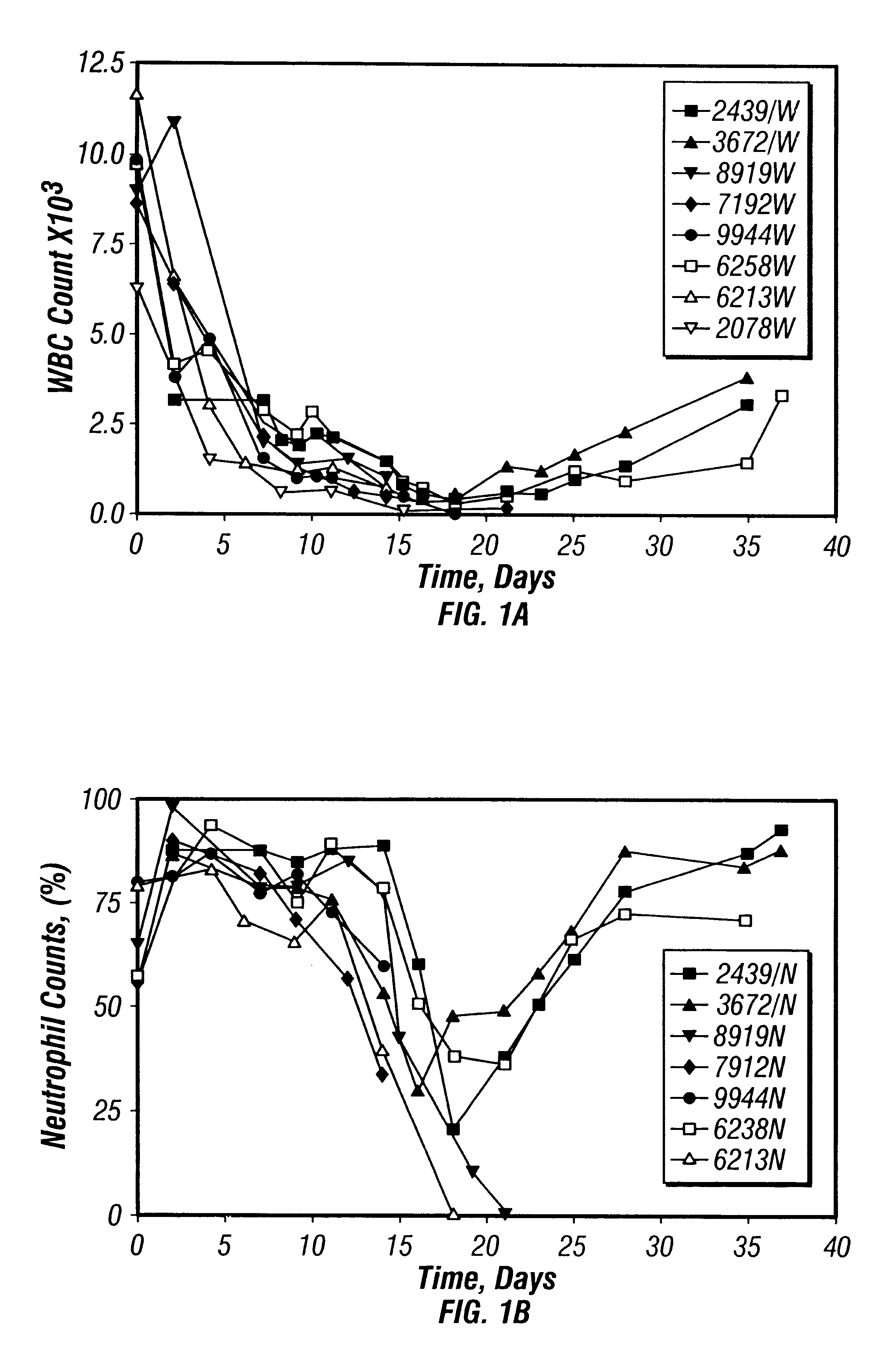Large animal model of invasive pulmonary aspergillosis in an immunocompromised host
a pulmonary aspergillosis and immunocompromised technology, applied in the field of large animal models of invasive pulmonary aspergillosis in immunocompromised hosts, can solve problems such as animal death, and achieve the effect of high clinical efficacy
- Summary
- Abstract
- Description
- Claims
- Application Information
AI Technical Summary
Benefits of technology
Problems solved by technology
Method used
Image
Examples
example 1
Parameters for the Development of The Model
The inventors describe the development of a model which shows consistent and reproducible development of mold infection in an immunosuppressed beagle as is observed in human clinical counterparts. A variety of parameters that were completely controlled leading to the consistency of the model are described below:
1. The "Right" Animal: While choosing an animal the inventors had to consider that a human / clinical mold infection, such as an Aspergillus infection, usually begins as a localized infection and not as a widespread and diffuse pulmonary infection. To be able to reproducibly inoculate a specified dose of an infectious agent in a limited, defined part of the airways the inventors must have easy access to a particular part of the pulmonary tree. This meant that a large animal, such as dog, pig, sheep or monkey, rather than a rodent or lagomorph should be considered. The beagle, which is accepted by both the NCI and the FDA for safety stu...
example 2
Data Obtained Using the Model
The complexity of the new model illustrates clearly the difficulty the inventors experienced in making the mold (Aspergillus fumigatus) infect a large animal. Only when a profoundly immunosuppressed state was obtained, could the inventors successfully and reproducibly infect the dogs. To obtain this immunosuppressed state the inventors decided to use a combination of total body irradiation (TBI) and steroids. This was based on the following considerations:
1. TBI is used as the basis for the majority of the current clinical bone marrow pre-transplantation conditioning programs, and it is considered as the equivalent of a clinical "golden standard" for pre-transplant conditioning therapy. Its main advantage remains in its reproducibility, an XRT dose can be standardized to within less than 5% of calculated / desired dose, whereas actual delivered systemic doses of most cytotoxic medications vary from two- to more than five-fold.
2. Steroids, which are very im...
PUM
| Property | Measurement | Unit |
|---|---|---|
| time | aaaaa | aaaaa |
| time | aaaaa | aaaaa |
| time | aaaaa | aaaaa |
Abstract
Description
Claims
Application Information
 Login to View More
Login to View More - R&D
- Intellectual Property
- Life Sciences
- Materials
- Tech Scout
- Unparalleled Data Quality
- Higher Quality Content
- 60% Fewer Hallucinations
Browse by: Latest US Patents, China's latest patents, Technical Efficacy Thesaurus, Application Domain, Technology Topic, Popular Technical Reports.
© 2025 PatSnap. All rights reserved.Legal|Privacy policy|Modern Slavery Act Transparency Statement|Sitemap|About US| Contact US: help@patsnap.com


